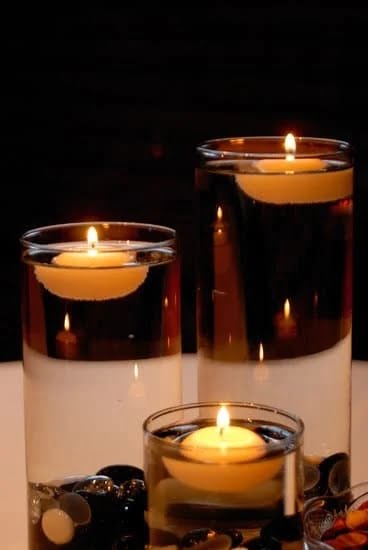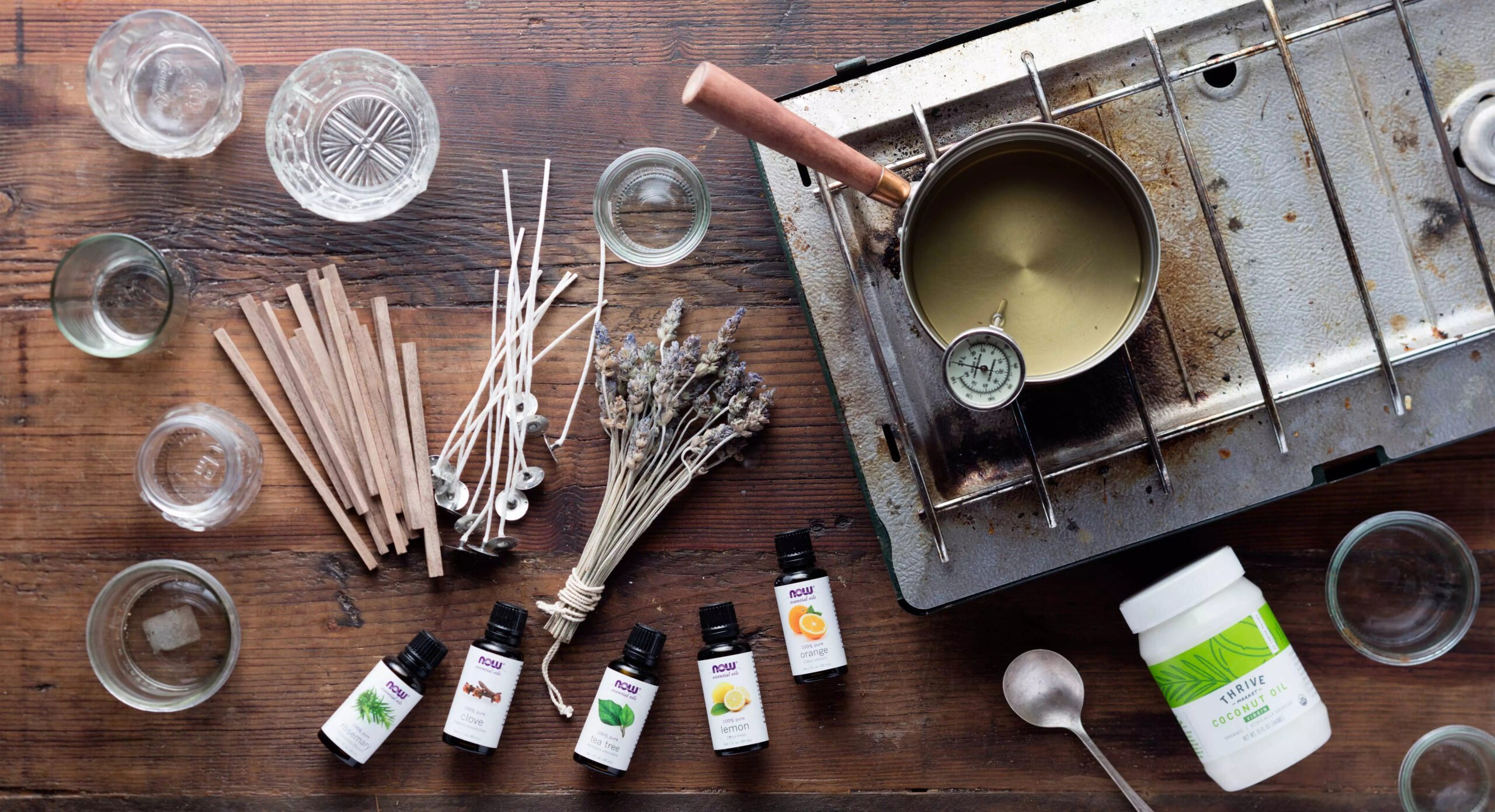Can you use fragrance oils in candle making? Many people who are new to candle making often wonder about the possibility of using fragrance oils in their creations.
In this article, we will explore the world of fragrance oils and how they can be effectively used in candle making. From understanding the properties of fragrance oils to learning about the best types for candle making, this comprehensive guide will provide all the necessary information for incorporating fragrance oils into your candle making process.
Fragrance oils are a popular choice for adding scents to candles, offering a wide variety of options and a strong scent throw when burning. However, it is important to know how to properly use them to achieve the best results. This article will cover everything you need to know about using fragrance oils in candle making, including tips for mixing and blending them, potential challenges and solutions, and the importance of using quality fragrance oils.
One key aspect we will delve into is the difference between essential oils and fragrance oils, as well as how each type affects the final product. Whether you are a beginner looking to add pleasing scents to your homemade candles or an experienced candle maker seeking to expand your knowledge, this article will provide valuable insights into the world of fragrance oils in candle making.
Understanding Fragrance Oils and Their Properties
Fragrance oils are synthetic or artificially crafted oils that contain a blend of various aroma compounds. These oils can be used to add scent and aroma to candles, soaps, lotions, and other products. When it comes to candle making, fragrance oils are a popular choice because they offer a wide variety of scents and are often more affordable than essential oils.
One key property of fragrance oils is their strong and long-lasting scent throw. This means that when the candle is burned, the fragrance from the oil will fill the room and linger in the air for an extended period. Additionally, fragrance oils have a stable shelf life and do not evaporate as quickly as essential oils, making them ideal for use in candles that may be stored for some time before use.
Another important property of fragrance oils is their versatility. They come in many different scents, ranging from floral and fruity to spicy and woody. This variety allows candle makers to create unique and custom blends that cater to different preferences and occasions. Some fragrance oils are also designed specifically for use in candle making, which ensures optimal performance when used in this particular application.
When using fragrance oils in candle making, it is crucial to consider their flashpoint, density, solubility, and compatibility with wax. Different fragrance oils have different properties that can affect how they perform in candles. For example, some fragrance oils may discolor the wax while others may accelerate or decelerate the burning process. Understanding these properties can help you select the right fragrance oil for your specific candle making needs.
| Property | Description |
|---|---|
| Scent Throw | The strength and lasting power of the aroma when the candle is burned. |
| Versatility | The ability to choose from a wide range of scents for different preferences. |
| Performance Factors | Flashpoint, density, solubility, compatibility with wax. |
The Difference Between Essential Oils and Fragrance Oils
When it comes to candle making, understanding the difference between essential oils and fragrance oils is crucial. Both types of oils can be used to scent candles, but they have different properties and characteristics that can impact your candle-making process and the final result.
Properties of Essential Oils
Essential oils are derived from plants through methods like distillation or cold-pressing. They are highly concentrated and contain the natural aroma of the plant they are extracted from. Essential oils are known for their therapeutic properties and many people prefer them for their natural origins and potential health benefits. However, they can also be more expensive than fragrance oils due to the labor-intensive process of extraction.
Properties of Fragrance Oils
Fragrance oils, on the other hand, are synthetic or artificially created scents. These oils are often more affordable than essential oils and come in a wide variety of fragrances that mimic natural scents as well as unique blends not found in nature. They are also generally stronger in scent throw when compared to essential oils, making them a popular choice for candle makers looking for a powerful aroma.
By understanding these differences, you can make an informed decision about which type of oil to use in your candle making. While both essential oils and fragrance oils have their benefits and drawbacks, ultimately your choice may depend on factors such as cost, availability, desired scent strength, and personal preference.
How to Properly Use Fragrance Oils in Candle Making
When it comes to candle making, using fragrance oils is a popular choice for adding beautiful scents to your creations. However, it is important to properly use fragrance oils in order to achieve the best results in your candle making process. Here are some guidelines on how to properly use fragrance oils in candle making:
- Choose the right type of fragrance oil: When selecting a fragrance oil for your candles, make sure to choose one that is specifically formulated for candle making. These oils are designed to disperse uniformly throughout the wax and provide a strong scent throw when the candle is burned.
- Measure accurately: It’s crucial to measure the amount of fragrance oil accurately according to the recommended usage rate for the specific type of wax you are using. Using too much or too little fragrance oil can result in poor scent throw and inconsistent burning.
- Properly incorporate the fragrance oil: To ensure that the fragrance oil is evenly distributed throughout the candle, it should be added to the wax at the correct temperature and stirred thoroughly. This ensures that every part of the candle will emit a consistent scent when burned.
By following these steps, you can effectively use fragrance oils in your candle making process and create beautifully scented candles that everyone will love.
Keep these tips in mind as you experiment with different types of fragrances and become familiar with their unique characteristics.
The Best Types of Fragrance Oils for Candle Making
When it comes to choosing fragrance oils for candle making, there are a wide variety of options to consider. One popular type of fragrance oil for candle making is soy-based fragrance oils. These oils are known for their clean and natural scent, making them a great choice for eco-friendly candles. Another popular option is floral fragrance oils, which offer a range of beautiful and soothing scents such as lavender, rose, and jasmine.
In addition to these options, there are also many fruit-based fragrance oils available that can add a sweet and refreshing aroma to your candles. Common fruit scents include apple, peach, and citrus blends. For those who prefer more unique and exotic scents, there are also tropical and spice-based fragrance oils that can add a touch of warmth and adventure to your candles.
When choosing the best types of fragrance oils for candle making, it’s important to consider the quality and purity of the oils. Look for fragrance oils that are specifically designed for use in candle making, as they will be formulated to withstand the heat of the melted wax without losing their scent.
It’s also important to consider how the scent will blend with the natural aroma of the wax itself, as well as how strong or subtle you want the final aroma to be.
| Fragrance Oil Type | Description |
|---|---|
| Soy-based Fragrance Oils | Clean and natural scents, eco-friendly |
| Floral Fragrance Oils | Beautiful and soothing scents like lavender, rose, and jasmine |
| Fruit-based Fragrance Oils | Sweet and refreshing aromas such as apple, peach, and citrus blends |
| Tropical/Spice-based Fragrance Oils | Unique and exotic scents that add warmth and adventure |
Tips for Mixing and Blending Fragrance Oils
When it comes to candle making, mixing and blending fragrance oils is a crucial step in creating unique and captivating scents. Whether you are a beginner or an experienced candle maker, mastering the art of combining fragrance oils can elevate the quality of your candles. Here are some tips to help you achieve the perfect blend:
- Start with a small test batch: Before committing to a large batch of candles, it’s essential to experiment with small quantities to test different fragrance oil combinations. This allows you to adjust the ratios and make any necessary changes without wasting a significant amount of materials.
- Consider the strength of each fragrance oil: Some fragrance oils are more potent than others, so it’s important to take this into account when blending. Mixing equal parts of two strong scents may overpower the final product, while a weaker scent may require a larger quantity to achieve the desired aroma.
- Keep detailed records: As you experiment with different blends, be sure to keep detailed records of your recipes and observations. This will help you replicate successful combinations in the future and avoid repeating any unsuccessful ones.
Successfully blending fragrance oils requires careful consideration and experimentation. By following these tips, you can create exquisite scents that will delight your customers and enhance their overall experience with your handmade candles.
Remember that when using fragrance oils in candle making, it’s important not only to create pleasing scents but also ensure that they adhere well to the wax for optimal performance. By carefully mixing and blending your fragrance oils, you can create one-of-a-kind candles that stand out in today’s competitive market.
Potential Challenges and Solutions When Using Fragrance Oils in Candle Making
Challenges in Using Fragrance Oils
While using fragrance oils in candle making can add delightful scents to your creations, it can also present some challenges. One common challenge is that not all fragrance oils are compatible with the wax used in candle making.
Some fragrance oils may cause the candle wax to “sweat” or form a layer of liquid on top of the candle, affecting its appearance and performance. Another challenge is that certain fragrance oils may not produce the desired scent throw when the candle is burned, leaving the final product with a weak or unpleasant smell.
Solutions to Overcome Challenges
To address these challenges, it is important to carefully select fragrance oils that are specifically formulated for use in candles. Look for fragrance oils that are labeled as safe for use in candles and have been tested for compatibility with candle waxes.
Additionally, consider using fragrance oils from reputable suppliers known for their high-quality products. It’s also recommended to conduct small test batches when experimenting with new fragrance oils to observe how they perform in different wax blends and burning conditions.
Ensuring Proper Mixing and Dilution
Another potential challenge when using fragrance oils in candle making is ensuring that they are properly mixed and diluted into the wax. Improper mixing can result in an uneven distribution of scent throughout the candle, leading to inconsistent scent throw.
To overcome this challenge, thoroughly blend the fragrance oil into the melted wax at the appropriate temperature, following manufacturer guidelines for usage rates and mixing instructions. This will help ensure that the fragrance oil disperses evenly throughout the wax, resulting in a consistent and pleasing aroma when the candle is burned.
The Importance of Quality Fragrance Oils for Successful Candle Making
When it comes to successful candle making, the quality of the fragrance oils you use is paramount. The right fragrance oil not only adds a pleasing aroma to your candles but also contributes to the overall quality and performance of the finished product. It is important to choose high-quality fragrance oils that are specifically formulated for candle making, as they can significantly impact the scent throw, burn time, and overall customer satisfaction.
Using subpar or low-quality fragrance oils in candle making can result in a weak or unpleasant scent throw, uneven burning, and an overall inferior product. Investing in premium fragrance oils may come with a higher price tag, but the results are well worth it. High-quality fragrance oils are designed to perform well in candles and will ensure that your final products meet or exceed customer expectations.
In conclusion, the importance of using quality fragrance oils for successful candle making cannot be overstated. By understanding the properties of fragrance oils, learning how to properly use them, and selecting the best types for your specific needs, you can create candles that not only look beautiful but also fill any space with delightful scents.
Investing in top-notch fragrance oils may require some additional expense, but the improved performance and customer satisfaction will ultimately make it a worthwhile investment in your candle making endeavors.
Frequently Asked Questions
Are Fragrance Oils Safe to Burn in Candles?
Yes, fragrance oils are safe to burn in candles as long as they are specifically designed for candle making. Using the wrong type of oil can result in improper burning and potential safety hazards.
What to Avoid When Making Candles?
When making candles, it’s important to avoid using flammable materials near open flames or hot wax. Additionally, avoid adding too much fragrance oil or dye, as this can affect the quality and safety of the finished product.
What Are the Best Fragrance Oils to Use for Candle Making?
The best fragrance oils to use for candle making are those specifically formulated for this purpose. Look for high-quality oils that are designed to blend well with the wax and produce a strong, lasting scent when the candle is burned. Popular options include vanilla, lavender, and sandalwood oils.

Welcome to my candle making blog! In this blog, I will be sharing my tips and tricks for making candles. I will also be sharing some of my favorite recipes.





